In January 2023, more than 60 college and university campuses participated in the seventh annual National Day of Racial Healing, following the justice-focused legacy of students who came before them. Throughout much of the past century, college and university students have been a powerful force, calling on us to live up to our professed values of equality for all and often, literally, demonstrating a desire to change the status quo on racism in America.
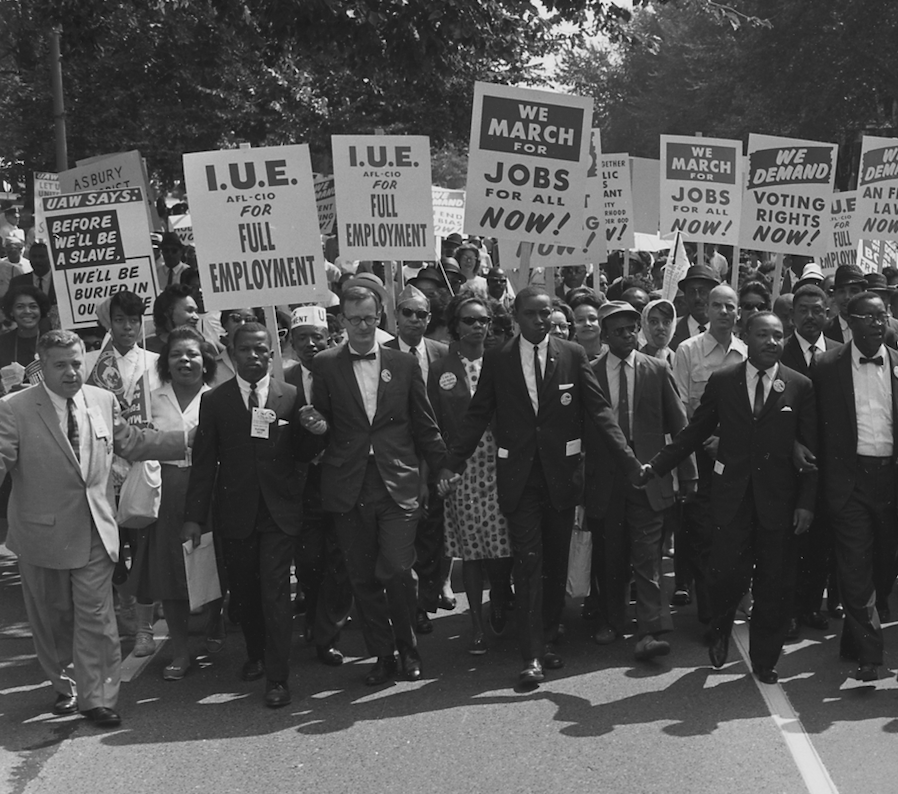
John Lewis at the March on Washington for Jobs and Freedom, 1963.
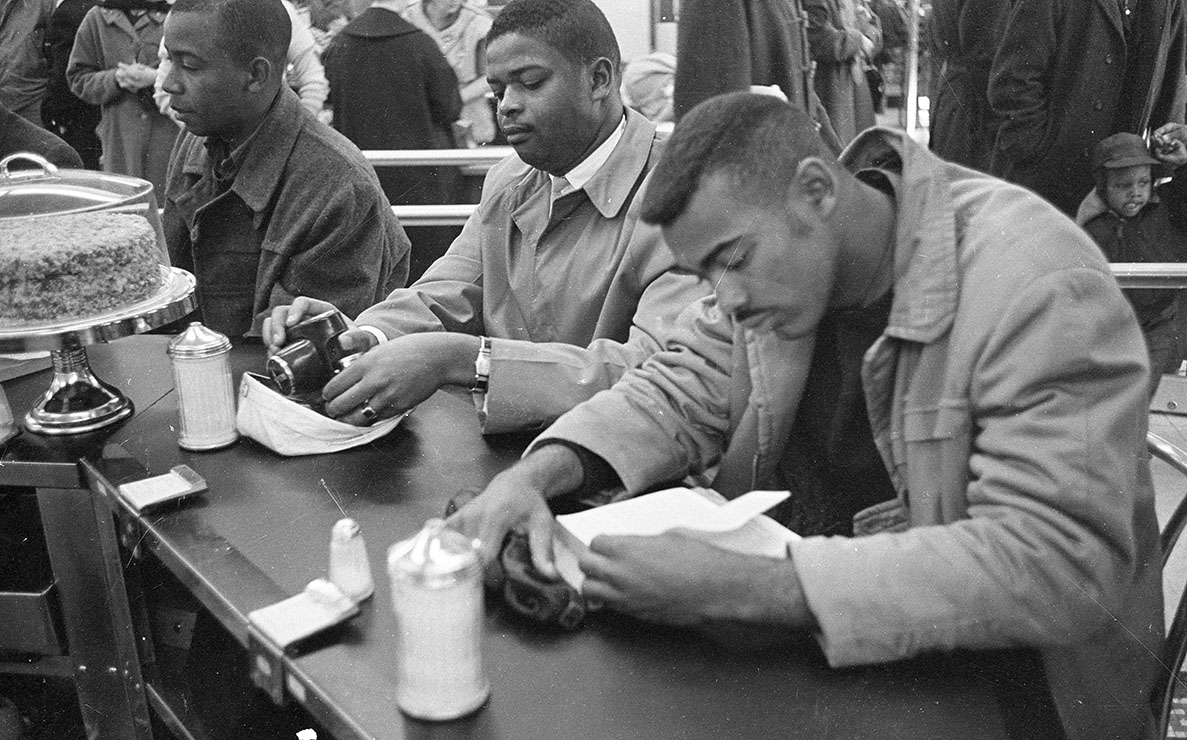
Students take a seat at a segregated lunch counter in Durham, NC.
“John Lewis was in his 20s when he was marching,” says Sharon Stroye of Rutgers-Newark. “College students participated in the sit-ins and the freedom rides, young adults drew attention to George Floyd’s murder, regardless of ethnicity they were all young.”
“I tell students this is your legacy,” says Cynthia Spence of Spelman College, as she describes a mural in their student center depicting the history of Black women’s involvement in social justice movements from the early 1900s to the current era. “Students said we cannot move forward in a segregated society. We’re going to participate in the change we want to see.”
Passing the baton is a significant part of Stroye’s and Spence’s work as directors of Truth, Racial Healing & Transformation (TRHT) Campus Centers. “As a baby boomer,” says Stroye, “it’s my responsibility to assist in creating succession plans, road maps and opportunities for students to be front and center.”
There are 71 TRHT Campus Centers across the country developed in partnership with the Association of American Colleges & Universities (AAC&U). The AAC&U joined the W.K. Kellogg Foundation as a TRHT partner in 2017, because they were hearing that campus conversations on race had taken a turn.
“We heard from our students and educators in higher education that the work toward racial equity and racial justice had become more of an ‘us’ against ‘them’,” says Tia Brown McNair. She is the AAC&U’s Vice President in the Office of Diversity, Equity, and Student Success and the Executive Director for the TRHT Campus Centers. “The concepts of empathy, deep listening, focusing on interconnectedness and common humanity, which are core to racial healing, open up opportunities to build trust and relationships as central to addressing racism, bias, inequity and injustice.”
Racial healing: a core competency
These days, students once referred to as nontraditional – or adult learners who have been out of high school for some time – make up the majority of enrollees in community colleges, undergraduate and graduate programs. Post-secondary education marks a transitional period in life, as students prepare for a new career or seek skills to advance their current careers.
“When you come to college, regardless of your age, your life will be transformed,” says Stroye. “Whether students become leaders in healthcare, education, politics, finance, nonprofits or government, they are now the decision-makers.”
According to TRHT Campus Center directors, this transitional period is a perfect time to gain skills in racial healing that are immediately applicable to life. Everyday actions in the workplace can directly impact justice by reducing racial disparities in employment and income and cultivating cultures of belonging.
Khayree Williams directs the TRHT Campus Center at Austin Community College, the first community college to join the TRHT network. The school provides educational access to those who haven’t been able to participate in higher education before, often students in their 30s, 40s and 50s.
Williams says, “The goal is to get them the credentials to get out the door at a faster pace so they can better support their families. We can give our nursing students, mechanics and welders technical knowledge, but if we haven’t talked about our ever-changing society, that they’re going to be in a diverse workforce, then we haven’t given them all the skills they need.”
For Williams, making equitable choices needs to be part of every professional’s skillset: “What does equity mean when you’re in a tough conversation, or sitting in on an interview committee and something doesn’t feel right? What does it mean to look at a process or practice in your industry and say, ‘this isn’t equitable’? What does it mean to use your voice, speak up and make an impact?”
That’s where racial healing practices come in – developing the skills to hear each other’s stories, concerns and pain points and own the work of shaping equity and justice together.
McNair points out that, “Diversity, equity and inclusion work was never meant to be about what divides us. It’s always been about what unites us. We should be embracing the opportunity to learn what makes us a community.”
Austin Community College: Breaking bread & caring for mental health
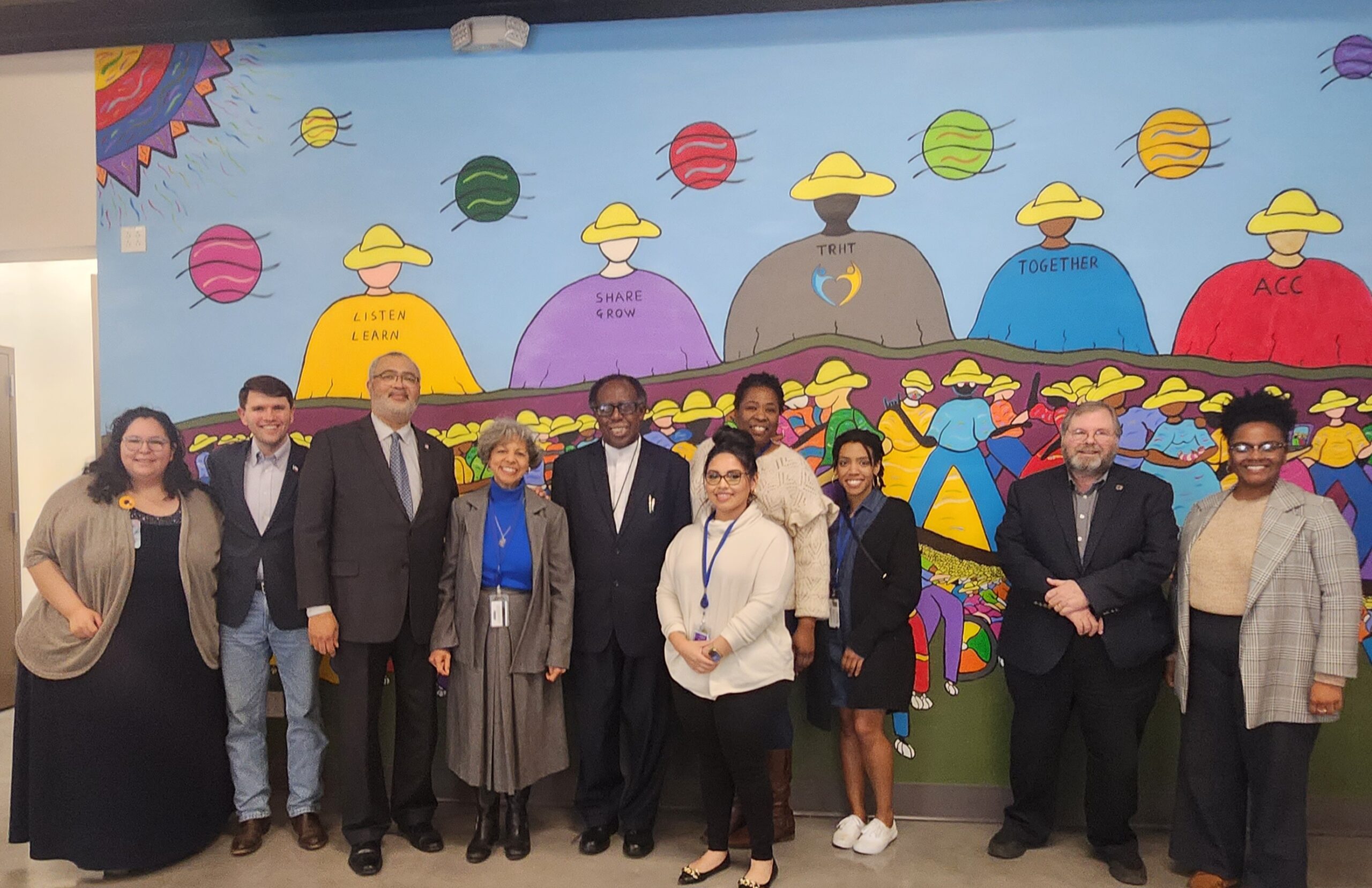
Members of the NDORH Voting Rights panel at Austin Community College
Like many TRHT campus centers, Austin Community College hosted an entire week of events centered around Martin Luther King, Jr.’s birthday and the National Day of Racial Healing. They kicked off the week with a culinary demonstration of foods from different religious traditions.
Williams says, “I grew up in a Black community that was predominantly Christian. Breaking bread was one of the best ways to sit down with folks who are like you, or unlike you. When we talk over food, we start to find what’s cherished in my culture or religion or culture is cherished in yours too. You might say, ‘Oh your grandma started cooking on Saturday night? Mine did too. Then you ask, ‘What else do we have in common?’”
Later in the week, Austin Community College hosted a roundtable conversation on mental health, which is a staple of the school’s annual offerings. “The biggest thing is,” says Williams, “social justice work and fighting for equality can be taxing. We see a lot of things in this work, like the Tyre Nichols video. We want students to know, it’s okay not to watch the videos, it’s okay to sit out the rally today if you’re not in a good place. We want our community to know they can be active and set boundaries.”
Racial healing as nourishment at Spelman College
For students who attend Spelman College in Atlanta, racial healing isn’t only about learning to connect across differences. Cynthia Spence, Spelman’s TRHT Campus Center director says, “Many students choose historically black colleges and universities [HBCUs] because they have been injured by racism, whether they come from an inner city public school, or a predominantly White private or boarding school where they were the only Black person.”
She says racial healing circles provide Spelman students with nourishment: “Racial healing gives validity to what they have experienced and room to openly talk about it.”
However, during the National Day of Racial Healing, Spelman did seek to bridge divides, partnering with HBCUs Morehouse College and Clark Atlanta University, as well as Berry College near Rome, Georgia. Berry is located in a predominantly White county.
Students led difficult dialogues, starting with storytelling about how race regulates their lives, followed by small group breakouts guided by prompts.
“We used what are called racial healing circle touchstones, particularly emphasizing this is not a space for judgment,” says Spence. “If someone says something you don’t agree with, rather than combating them, we encouraged students to go to a space of wonder and ask ‘I wonder why this person has this perspective.’”
Spence says the touchstones emphasize deep listening and empathy: “We say, ‘Try to see if it’s possible to place yourself in the other person’s shoes.’ These then become conversations that hit the heart. That’s what we have to do to move forward into equity, we have to touch the mind and the heart.”
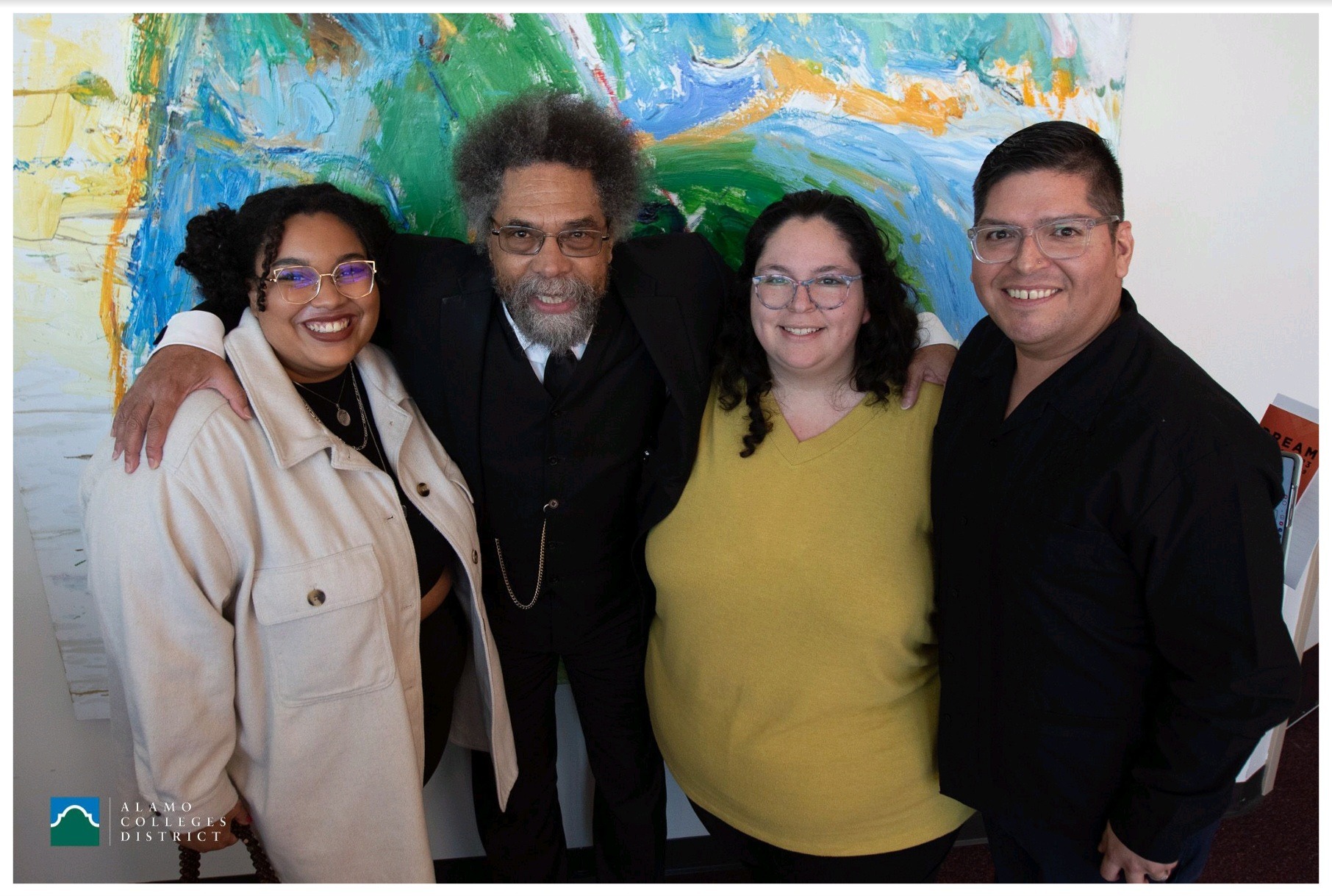
Cornel West with students from San Antonio College
Racial healing circles at Rutgers University
Living into the legacy of activism on college campuses, three Rutgers students shaped the work that ultimately led to the creation of the school’s TRHT Center.
“One White, one Muslim and one Hindu student were already meeting in their dorm rooms, trying each other’s traditional foods and discussing topics of race, gender and religion,” Stroye recalls. She encouraged the students to make the conversations bigger, suggesting they plan the topics and flow of the dialogues, while she supported them by paying for the food. This has grown into a campus-wide day of dialogues.
Conversations, in the form of racial healing circles, were centerpieces of Rutgers’ National Day of Racial Healing offerings this year, which spanned an entire week and included art performances and exhibitions. All of the week’s activities were developed in partnership with New Jersey Performing Arts Center and the Creating Change Network, a program hosted by New Jersey Theatre Alliance and ArtPride NJ to build a more equitable and anti-racist arts community in New Jersey.
Racial healing circles are usually facilitated by two people of different backgrounds, who invite participants to tell personal stories based on specific prompts that remove traditional hierarchies. For example, Stroye’s favorite introductory prompt is “introduce yourself – without titles, positions or roles – by telling us your name, your birth order and where your great-grandparents were born.”
“All of a sudden, people are texting their parents asking where their great grandparents were born,” Stroye describes. “You start seeing people become nostalgic, they start reflecting on their families. And, it allows us as facilitators to then explore where those first narratives come from, first stories about difference, and first stories about different people.”
Over the past five years, Stroye has facilitated close to 200 racial healing circles and workshops, engaging nearly 1,600 people. “Each one, no matter how big or how small, somebody makes a connection to a stranger,” she says. “That’s essential to diversity, equity, inclusion and justice work. It’s not the solution. But, this relationship-building process is integrated into the people who are doing diversity, equity and social justice work.”
Read More:
- The healing power of remembering
- The healing power of art
- The healing power of story
- The healing power of truth and action
- The healing power of conversation
- The healing power of expression
- The healing power of gathering

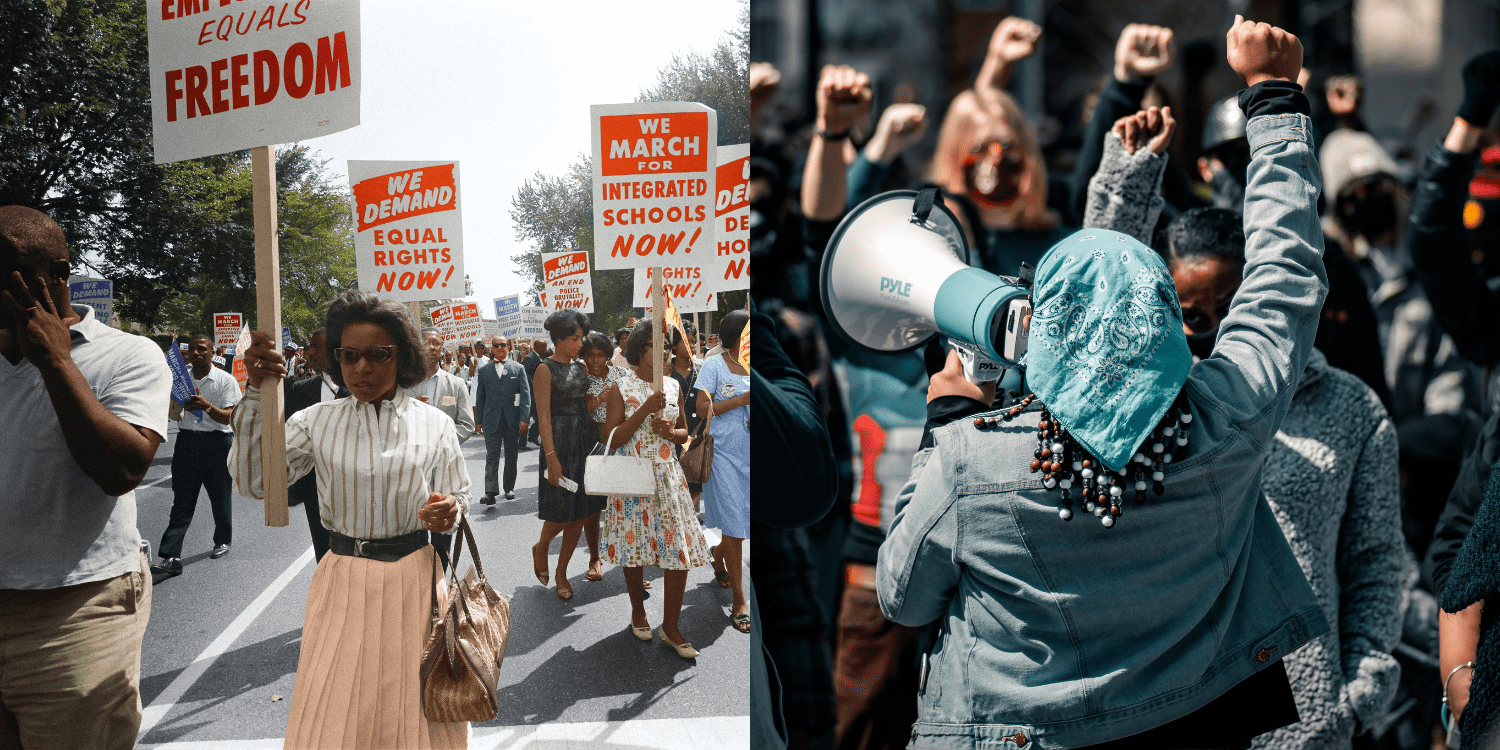

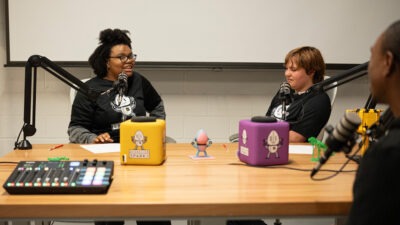
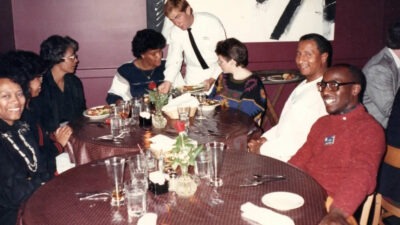
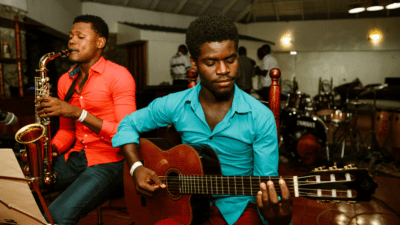
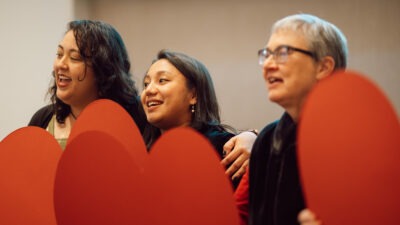

Comments